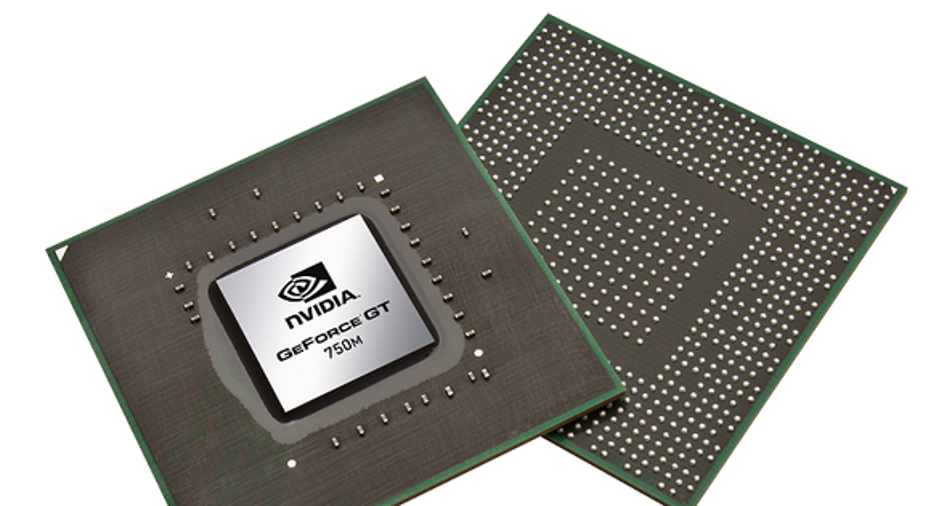NVIDIA Corporation GeForce GTX 1050 Specs Leak

Image source: NVIDIA.
Over the last several months, graphics specialist NVIDIA (NASDAQ: NVDA) has rolled out several graphics processors targeted at gamers based on its Pascal architecture. So far, the company has released products spanning a wide range of price and performance points, from the $199 GeForce GTX 1060 with three gigabytes of memory all the way up to the $1200 Titan X halo part.
It's been widely rumored that the company's next product based on the Pascal architecture is an even lower-cost product known as the GeForce GTX 1050. The 1050 is expected to replace the aging GeForce GTX 950 based on the company's previous-generation Maxwell architecture.
Thanks to a new leak from the generally reliable BenchLife.info, we now have key technical specifications of the upcoming GTX 1050.
Faster and lower power
According to BenchLife, the GTX 1050 (which will be powered by a chip referred to as GP107-400) packs 768 graphics cores -- unchanged from the prior generation GTX 950. However, the cores run at a frequency of 1316MHz base and 1380MHz boost, representing uplifts of 28.5% and 16.1%, respectively, over the corresponding speeds on the GeForce GTX 950.
The 1050 reportedly uses a similar 128-bit memory bus as the GTX 950, but memory speed has been boosted from 6.6 gigabits per second to 7 gigabits per second, for a 6% increase in bandwidth. The Pascal architecture also includes some nifty memory compression enhancements that should amplify the effective memory bandwidth of the chip.
Finally, BenchLife.info says that the 1050 will be rated at a 75-watt thermal design power, a 15-watt reduction from what the GeForce GTX 950 was rated at (though add-in-board card vendors did offer performance-reduced variants of the GTX 950 rated at a 75-watt thermal design power).
All told, it would appear that with the GTX 1050, NVIDIA is building pretty much what one would expect from a Pascal-based successor to the GTX 950 -- higher performance at lower power.
Targeting a fairly large user base
According to the Steam Hardware Survey (Steam is a very popular computer game distribution platform), users of NVIDIA's x50-class graphics cards (GTX 550 Ti, GTX 650/650 Ti, GTX 750/750 Ti, and GTX 950) make up approximately 10.24% of all DirectX 12-capable graphics processors in use by Steam users.
The GTX 1050 isn't likely to provide a large enough performance boost to compel GTX 950 buyers to upgrade, but users of lower-tier x50-class cards (still 8.91% of the DirectX 12-capable graphics processors on Steam) should find the 1050 to be a significant upgrade.
In light of this, I expect the 1050 to ultimately prove to be quite popular.
What pricing should we expect?
NVIDIA's cheapest Pascal-based graphics card currently sells at $199, so expect the GTX 1050 to come in meaningfully below that. Previous rumors have pointed to NVIDIA planning versions of the card with four gigabytes of video memory as well as an even lower cost version paired with just two gigabytes of video memory.
I could see a 1050 with four gigabytes of memory priced at around $159, the price point at which the GTX 950 launched at (and $10 higher than what the GTX 750 Ti was originally priced at). A potential 1050 with just two gigabytes of memory (and possibly some graphics cores disabled) could fit in nicely at $119 (the same point that the GeForce GTX 750 came in at).
With these products, NVIDIA's gaming-oriented graphics processor lineup will be completely filled out, positioning it well for the quarters ahead.
A secret billion-dollar stock opportunity The world's biggest tech company forgot to show you something, but a few Wall Street analysts and the Fool didn't miss a beat: There's a small company that's powering their brand-new gadgets and the coming revolution in technology. And we think its stock price has nearly unlimited room to run for early in-the-know investors! To be one of them, just click here.
Ashraf Eassa has no position in any stocks mentioned. The Motley Fool owns shares of and recommends Nvidia. Try any of our Foolish newsletter services free for 30 days. We Fools may not all hold the same opinions, but we all believe that considering a diverse range of insights makes us better investors. The Motley Fool has a disclosure policy.



















